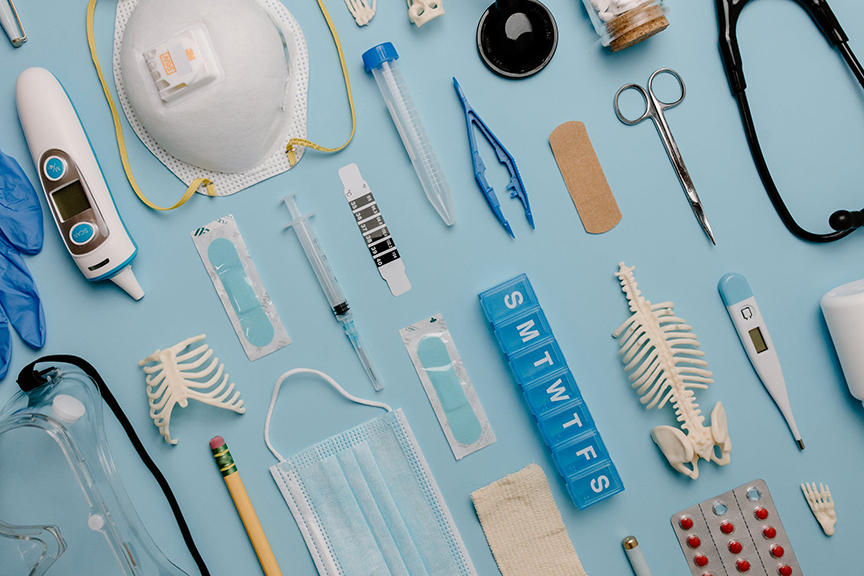
What does growing funding for ‘femtech’ actually mean for women?
On a brisk winter day in late 2017, Alessandra Henderson, now 36, was rushing to meet a colleague for brunch in Brooklyn when she realized she couldn’t focus her eyes on the street signs at an intersection. Since her LASIK eye surgery several months earlier, she had impeccable vision. But now the crisp white letters of street names blurred across the emerald green rectangles before her. Hormones, it turned out, were the culprit — specifically, the topical hormone patch she was wearing. The patch helped to stimulate her ovaries to produce more eggs during egg retrieval, the first part of the egg freezing process, which Henderson had just embarked on.
“I was totally blown away by the fact that a patch that I put down by my ovaries could impact the way that I move through the world and the way that I see,” she says. “I had no idea that women have estrogen receptors all over our bodies that have a massive impact on our physical health, on our emotional health, mental health, gut health, brain health, heart health, eye sight, you name it.”
Henderson calls the experience a light-bulb moment, one that spurred her to learn as much as she could about hormones. As she researched, she noticed a mountain of information about hormones related to fertility and pregnancy, but a severe lack of resources around hormonal health after the reproductive window, including around perimenopause and menopause, even though approximately 1.3 million women enter menopause each year in the United States alone, and by 2025 more than 1 billion women worldwide will be post-menopausal. She saw an unmet need and a business opportunity.
Launching a femtech startup
Building on her background in consumer tech and startups, Henderson founded Elektra Health, along with co-founder Jannine Versi and founding physician Dr. Anna Barbieri, in 2019. The company aims to “smash the menopause taboo” and support women through the entire menopause journey, which can last about seven to 14 years. Their digital platform focuses on education, as well as connecting members with medical experts and to each other through a “virtual menopause wellness community,” dubbed Meno-morphosis. Henderson says, “I view Elektra as a massive opportunity to improve women’s lives.”
In 2021, Elektra Health raised $3.75 million in seed funding to support the company’s efforts. They’re part of a growing number of tech companies — dubbed “femtech” — supporting, researching, and catering to female-specific health needs, including menopause, menstruation, fertility, sexual health, reproductive health, and more, through technology and products tailored to improve the delivery of health care, empower self-care (think trackers, wearables, and data), elucidate taboo topics, and provide culturally-sensitive care for marginalized populations.
A milestone in femtech investment
Capital funding for femtech surpassed $1 billion for the first time in 2021, up from $520 million in 2020 and a peak of $650 million in 2018, according to Statista. Outside of cancer research, as McKinsey’s recent report on opportunities in women’s healthcare highlights, less than 2% of healthcare research and innovation spending goes to female-specific conditions, even though women make up half of the global population — certainly not a niche market. And, the report notes, estimates for femtech’s current market size range from $500 million to $1 billion, depending on the scope of how this field is defined.
A combination of forces could be spurring the surge in investment in femtech, including changing cultural awareness and acceptance about women’s health topics. Public figures like Michelle Obama and Gwyneth Paltrow speaking up about menopause and perimenopause has helped bring these topics into mainstream conversation. In television, for example, how female aging is portrayed seems to be shifting, from the Golden Girls to the Sex and the City reboot. And, increasing numbers of women in the world of venture capital, as well as incremental changes in corporate workplaces may play a part.
“There are more senior women in positions of leadership who are putting priority on paid leave family, leave, IVF, menopause,” Henderson says, reflecting on her career working in start-ups. “It’s important to have decision makers who understand, from a personal perspective, that these issues matter and that they have impact on everything from productivity to employee turnover to just sheer spending power.”
Like Henderson, personal health experiences also drew entrepreneur Kathrin Folkendt, who is currently based in Portugal, into the world of solutions-oriented technology for women and inspired her to found two companies: PERLA Health, a membership-based platform for people with polycystic ovary syndrome, as well as Femtech Insider, a digital industry publication. Self-described as “tech optimistic,” she’s fired up about the possibilities of femtech. “I think we have a unique opportunity to really make the lives of millions of women better while building great businesses that are sustainable and also bring great returns,” Folkendt says. “It’s sort of this combination of doing good while, frankly, making money.”
But, Folkendt carefully points out that the increase in femtech funding, often touted in headlines, can be misleading. Even though the total dollar amount spent on femtech has exceeded $1 billion, the number of femtech deals has not increased since 2019, as McKinsey’s report on the “femtech revolution” shows. “The number of deals isn’t increasing,” Folkendt explains, “the funding amount is — which means more later-stage companies are doing bigger rounds.”
The future of women’s health research and innovations
Though breaking the billion-dollar funding barrier marks a notable milestone for femtech, zooming out and looking at funding for the biotech sector points to room for growth. If you picture all the funds spent on biotech overall as a pie, the slice for all female-specific conditions is essentially just a thin line — barely a slice at all. According to McKinsey’s analysis, the total annual spend for research and development in 2020 was $198 billion for biopharma; from that, 4% was spent on researching women’s cancers and 1% on all other female-specific conditions combined. Of the $36 billion spent on medical technology in 2020, only 2% was spent on researching women’s cancers and 2% on all other female-specific conditions combined.
“If you give women and people pursuing female-oriented innovations in medicine smaller budgets, you’re essentially telling them to take on less ambitious mandates,” says Ridhi Tariyal, founder of NextGen Jane, a genomics startup developing a tampon-based test to diagnose endometriosis. Her company received $1.1 million in February, as the second phase of a Small Business Innovation Research Fast Track grant from the National Institutes of Health. “Doing transformative things in medicine and science, they all require huge budgets. And you can look at how much other biotech companies are raising to get a sense of that. I mean, they are raising $50 million, $100 million dollar rounds. […] If you want inventors to really tackle huge problems for women, you just have to give them budgets to match that.”
But, hope persists, Tariyal says, emphasizing that even women who aren’t investors, scientists, or tech entrepreneurs can help move critical research forward. “People can get involved in the clinical research it takes to enliven a better understanding of our issues and our bodies,” Tariyal says.
For example, NextGen Jane seeks participants for their online research study on menstrual health. “We’re at this moment where there’s so much clinical research happening, it’s amazing,” Tariyal says. “And we will only get to a place where there are better products and better understanding if people are willing to participate in that global research.”
Photography by Tara Winstead.



